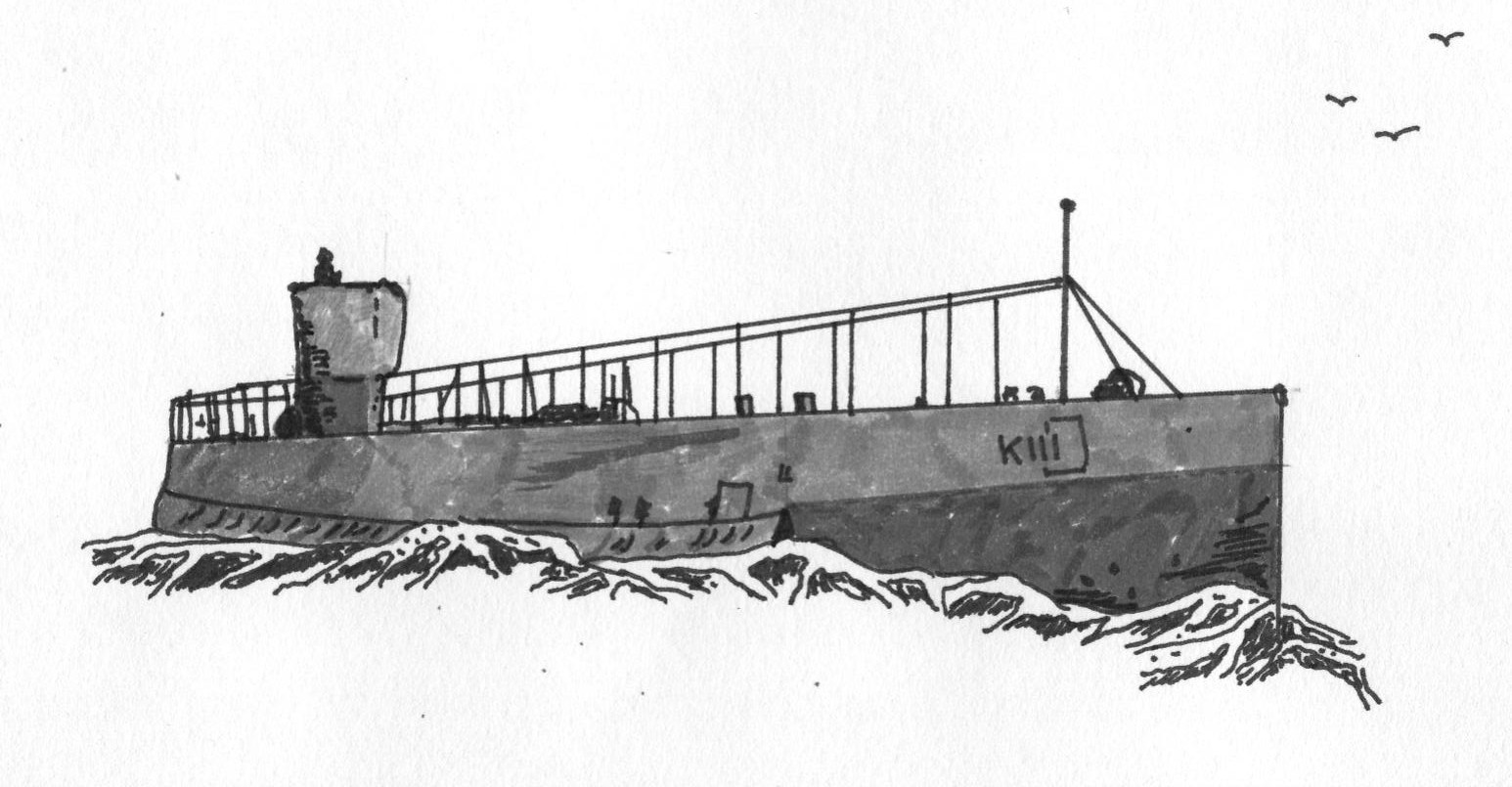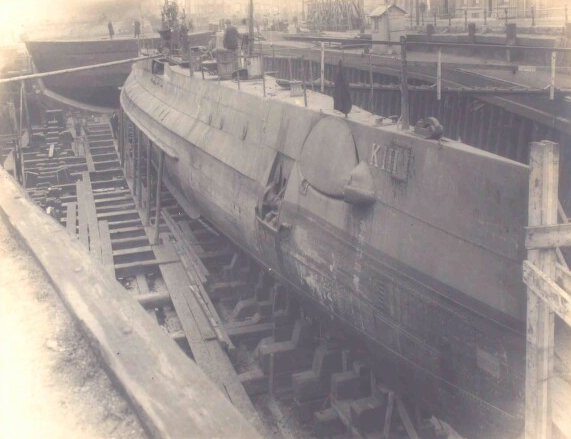Copyright Archive Municipalty Archive Vlissingen 413.40/FA11887
On 21 January 1922 send the inspector of the submarine service Gerard Lodewijk Schorer stationed at Den Helder, Netherlands an advice to the naval staff at The Hague, Netherlands dealing with the smoothness of the hulls of submarines and the effects on the range and speed. The Dutch submarines Hr. Ms. K III and K IV were compared with a Spanish submarines which had complete similar lines. It became again obvious how important the smoothness of hull was and to prevent at least as much protruding parts despite the wishes of some commanding officers. Submerged speed and range were of the highest importance seen from defensive and offensive view and just in time in upmost emergency to be neglected.
The submerged achievements were:
Dutch submarine Hr. Ms. K III with as much removed as possible except for the telegraph and compass and one periscope out, front rudders out with 281/271 rpm and 390kW a speed of 8,42 miles.
The Dutch submarine Hr. Ms. K IV with railing on the bridge and minesweeping rigging, front rudders out and one periscope out and with 271 romp and 363 KW a speed of 7,88 miles.
The anonymous Spanish submarine with the same lines as the Dutch K III, all rigging removed, front rudders in, 2 periscopes out, with 390 KW and 198rpm a speed of 9,15 miles, with 363 KW and 193rpm a speed of 8,95 miles and with 300 KW and 1180rpm a speed of 8,42 miles.
The general conclusion was that the Spanish was more efficient, with a speed of 7,86 miles was just 2/3 of the horsepower of the K IV needed, meaning that with a similar battery the range was factor 1,5 of the Dutch submarine. So it was a necessity to prevent protruding parts.
Achievements while surfaced:
KIII with a displacement of 580 ton, a speed of 16,332 miles with 439rpm and 868+832hp
KIV with a displacement of 578 ton, a speed of 14,24 miles with 401 rpm, 2x600hp
Spanish submarine with a d displacement of 555 ton, a speed of 16,49 miles with 380rpm and 2x700hp.
Notes
1. Built by Kon. Mij. De Schelde, Vlissingen, Netherlands with yard number 161. Electric Boat Company design. Supervisor H.H. Johnstone of the E.B.C. Ordered on 24 July 1914, contact signed in November 1914, keel laid down in the shed on the Noordwal on 15 July 1915, launched on 12 August 1919, trial on 3 April 1920, delivered on 9 July 1920 and stricken in March 1937. Displacement 582,690 (surfaced)-720,90 (submerged) tons and as dimensions 64,084 x 5.526 x 4.856 metres. An armament of 6-45cm/17.7” torpedo tubes for which 12 torpedoes were carried.
2. Built by Kon. Mij. De Schelde, Vlissingen, Netherlands with yard number 164. Electric Boat Company design. Supervisor H.H. Johnstone of the E.B.C. Ordered in October 1915, keel laid down in the shed on the Noordwal on 30 December 1915, launched on 2 July 1920, trial on 20 January 1921, delivered on 27 April 1921 and stricken in March 1937. Displacement 582,690 (surfaced)-720,90 (submerged) tons and as dimensions 64,084 x 5.526 x 4.856 metres. An armament of 6-45cm/17.7” torpedo tubes for which 12 torpedoes were carried.
3. This must be a B-class submarine consisting of the B-1/B-6 built between 1921-1923 by at SECN-Sociedad Espagnola de Construcciones Navales, Cartagena, Spain. Displacement 556 (submerged)-740 (surfaced) tons and as dimensions 64.1 x 5.6 x 5.2 metres. Armament consisted of 4-45cm/17.7” torpedo tubes (2xbow, 2x stern), for which 8 torpedoes were carried and 1-7,6cm anti aircraft gun.
Source
Archive Naval Staff 1886-1942 (National Archive at The Hague 2.12.18) inventory number 293.


